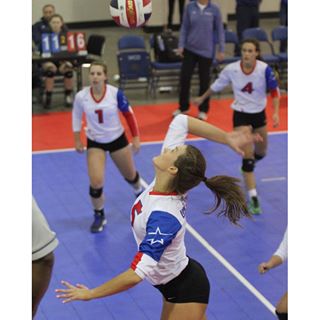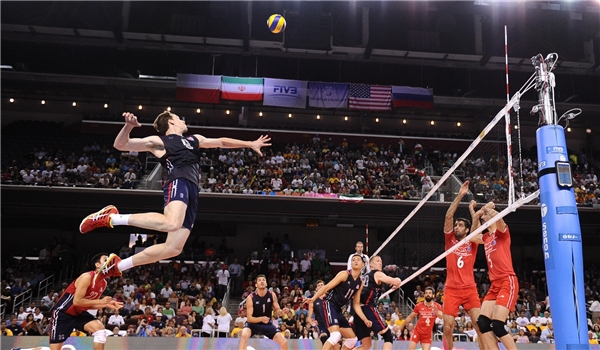A big developmental issue with female athletes (and increasingly male ones) in volleyball is a tendency to hit from a body position where the hips are square to the net. I’m not talking about final position, but instead starting position. In other words, they don’t initiate their swing from a hips open position. They look more like this:

…than like this:

Granted, the balls are at different point in the two photos, but I think you get what I mean. If you don’t, watch your players hit. How many of them have the open shoulder and hips of the guy above when they jump (or in this example of a powerful spike)? How many of them jump with hips and shoulders basically square to the net?
The square position many female players attack from (and I once wrote about a male player doing basically the same thing on a jump float serve) means they cannot generate as much power in their swing because they are not producing it from their core. It also means they are at increased risk of lower back and shoulder injuries. This comes from more back arching and trying to generate power from the shoulder respectively.
Volleyball Coaching Wizard Tom Tait in his interview describes the mechanics of hitting a volleyball as run-jump-throw. I have previously contended that because girls in the US don’t seem to learn to throw in a mechanically correct fashion (foot opposite the throwing arm should be forward) at a young age as frequently as boys do, it leads to the square body posture that is so problematic in their hitting. Upon returning to England in 2023, however, I saw it quite often in boys too.
I have talked with a number of folks about the need for young players to be taught how to throw early in their development. It’s something I recommended to those coaching the little ones at Svedala when I was there. I also had that discussion with Ruth Nelson, another Wizard who is the developer of the Bring Your Own Parent program for kids ages 5 to 10. She was in total agreement.
I know some coaches have their players throw footballs back and forth as a shoulder exercise. This is generally just for older players, though. They have big enough hands to hold and catch those bigger balls. For the little ones you’d probably want to use something smaller. I’ll leave someone more qualified than myself to address the mechanical differences.
Regardless, if you’re working with younger – or potentially just inexperienced – athletes, it’s worth incorporating throwing time in your training. You will likely help them become more powerful hitters and reduce their risk of injury.
This post on the JVA blog by yet another Wizard, Jim Stone, offers some advice.